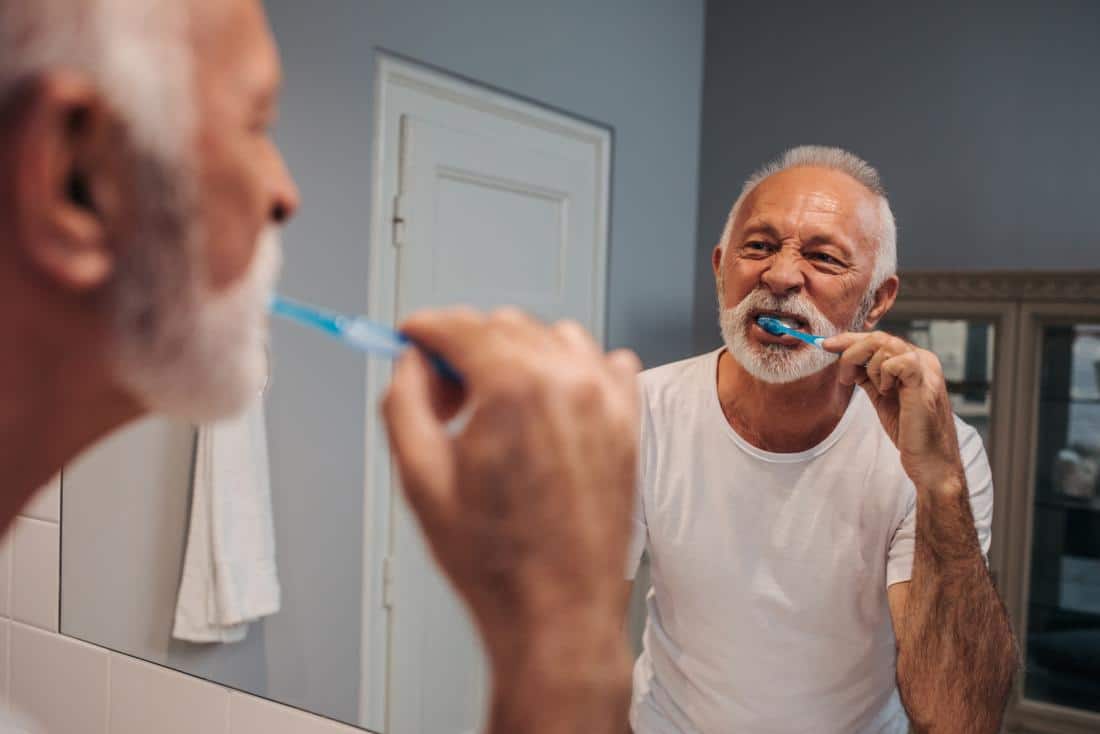Adopting the following habits will help a person care for their teeth and gums properly, which, in turn, will help prevent gum disease.
1. Brush the teeth properly
Brushing the teeth properly is key to having a healthy mouth and gums. The American Dental Association (ADA) recommend that people follow the guidelines below:
- Brush at least twice a day using a soft-bristle toothbrush and fluoride toothpaste.
- Replace the toothbrush every 3 to 4 months, or sooner if the bristles begin to fray.
- Brush the teeth at a 45-degree angle to the gums.
- Move the toothbrush in short strokes.
- Press gently.
- Clean the insides of the front teeth by turning the brush vertically and making several short strokes along each tooth.
2. Choose the right toothpaste
The toothpaste aisle in most stores will contain many varieties of toothpaste, from whitening products to formulas containing baking soda.
Break down biofilm with PerioRenew
Unhealthy gums can dramatically impact more than just your smile. Learn more about this revolutionary new gel for gum disease.
sponsored ad
When choosing toothpaste, a person should ensure that it contains fluoride and has the ADA seal of approval on the packaging.
3. Floss daily
Many people neglect daily flossing, but the ADA recognizes this habit as an important part of oral care.
Flossing removes food and plaque from between the teeth and gums. If the food and plaque remain in these areas, this can lead to tartar, which is a hard buildup of bacteria that only a dentist can remove. Tartar can lead to gum disease.
4. Rinse your mouth out with care
Many people rinse their mouths out after brushing their teeth. However, oral hygiene practices should complement the effectiveness of fluoride products, such as toothpaste.
When a person washes their mouth out with water after brushing their teeth with fluoride toothpaste, they wash away the fluoride.
Conversely, when a person rinses their mouth out after eating, they may rinse away food and bacteria that can lead to plaque and tartar.
5. Use mouthwash
According to the ADA, there are two types of mouthwash: therapeutic and cosmetic. Both are available over the counter.
A therapeutic mouthwash can help:
- prevent gum disease
- reduce the speed at which tartar builds up
- reduce the amount of plaque on the teeth
- remove food particles from the mouth
However, people should not use mouthwash as a replacement for brushing and flossing.
A person should look for the ADA seal. This seal indicates that the manufacturer has demonstrated enough evidence to support the product’s safety and effectiveness.
The ADA state that children under the age of 6 years should not use mouthwash.
6. Get regular dental checkups
Dental checkups typically include professional cleaning of the mouth. Professional cleaning is the only way to remove tartar from the teeth. Professional cleaning can also help eliminate the plaque that a person may have missed when brushing their teeth.
With regular visits, a dentist can help identify the early signs of gum disease and gingivitis, a condition in which the gums become inflamed. Early detection can help prevent more severe problems from occurring.
7. Stop smoking
According to the Centers for Disease Control and Prevention (CDC)Trusted Source, smoking makes a person more susceptible to gum disease because it weakens the immune system.
The CDC recommends quitting smoking immediately to help reduce the risk of developing gum disease. The use of other tobacco products can also increase a person’s risk.
Diet tips.
What a person eats can directly affect the health of their teeth and gums. Different foods can have a positive or negative impact on gum health.
Some of the foods that people should incorporate into their diet include:
- high-fiber fruits and vegetables, as these can help clean out the mouth
- black and green teas, which help reduce bacteria
- dairy products, such as milk, cheese, and yogurt, as these foods help increase saliva production
- foods that contain fluoride, which include water and some poultry and seafood products
- sugar-free gum, as chewing it will increase saliva production
It is best to avoid the following foods and beverages:
- carbonated soft drinks that contain phosphoric and citric acids as well as sugar
- alcohol, as it can dry out the mouth
- sticky candies and sweets that stay in the mouth for a while
- starchy foods that can become stuck in the teeth.


